The ancient city of Heraklion - 1200 years under water
 Bashny.Net
Bashny.Net
Ancient Heraklion was hidden from the surface of the earth quake for several millennia. His discovery has surprised scientists. Although not Heraklion Atlantis (Atlantis legend is much older), their stories are very similar.
The Lost City was discovered under water after 1,200 years. The main seaport at the mouth of the Nile, Heraklion was small but thriving city. Its residents through contact with foreign merchants and sailors who frequented the town on the road to Egypt, were educated people with a broad outlook. The main temple of the city was dedicated to the god Amun.

But in the blink of an eye Heraklion disappeared. In the first century BC there was a strong earthquake that flattened homes, sinking ships in the harbor, killed most of the inhabitants of the city, forcing the others to flee, leaving all valuable property.

For two millennia, the ruins of the city, hidden from prying eyes silt and ten meters of water, lay 3 kilometers from the coast of Alexandria, in the Bay of Aboukir.
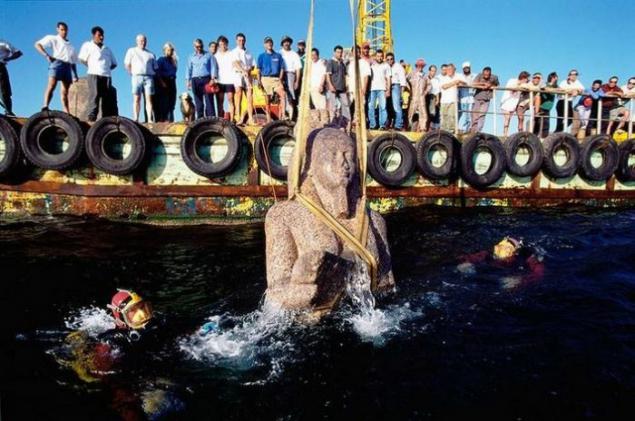
But last summer, the French archaeologist Franck Godo announced that he had discovered the remains of the city, which, in his opinion, are relevant to Heraklion: black granite slab or stele, on which is written the word "Heraklion", the remains of ten ships in the former harbor, as well as thousands of others items, including jewelry, coins, vases and personal belongings.
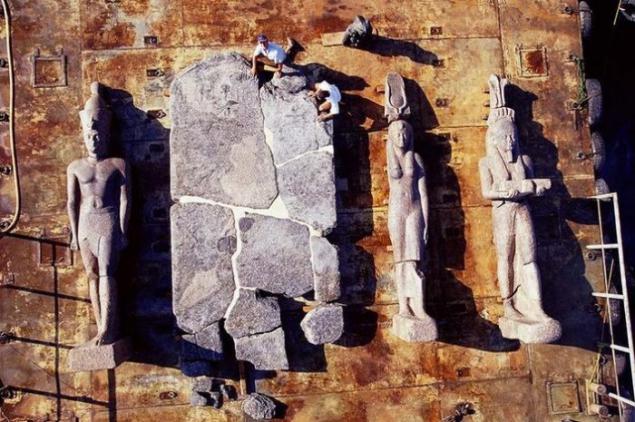
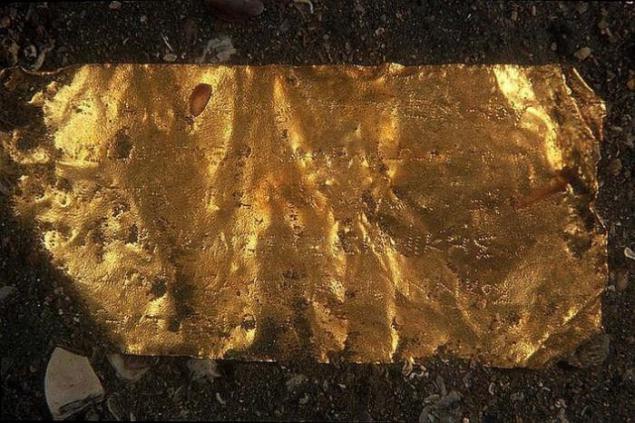
Although modern scholars about this city, little is known, it knew the whole ancient world. The Greek historian Diodorus wrote that Hercules, son of Zeus, was blocked by the Nile and thus saved the lives of people on the banks of the river.


In gratitude, the people erected a temple in his name and was named in his honor the city. According to another Greek historian, Herodotus, Elena the Fair and her lover Paris fled to Heraklion, fleeing from the wrath of the husband of Helen, Menelaus, but their forced return Tonis, guardian of the gates of the Nile.

Somewhat differently tells about these events Greek historian VI. Stesichorus. He says that the Greeks have been misled by the gods on the location of Helen to help with the war to reduce the population of Troy. In fact, according to Stesichorus, during the Trojan War, Elena was in Heraklion.
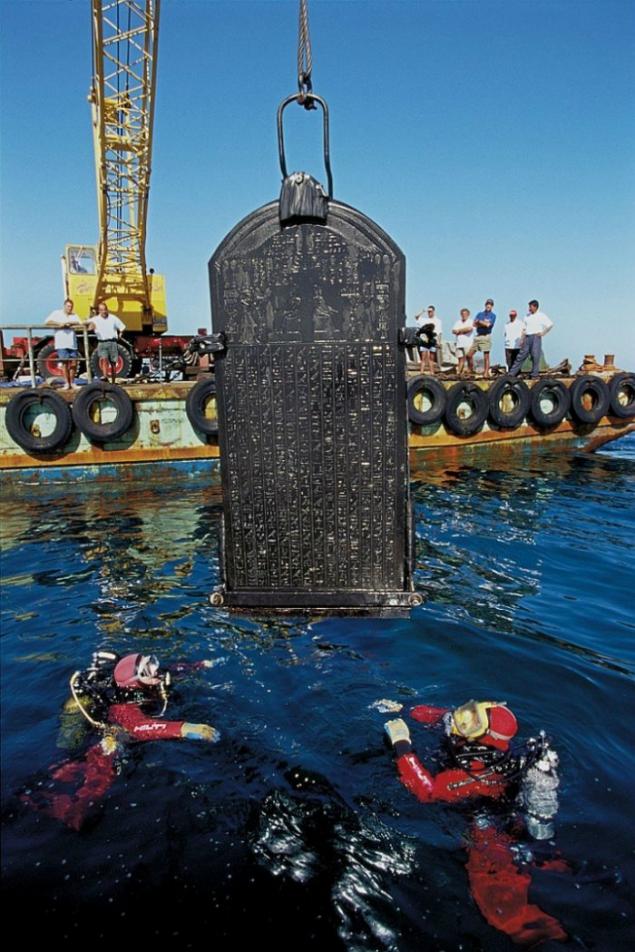
The inscription on the basis of the stele certifies that this plate was to be erected in the "Heracleon-Tronise (Herakleion-Thonis)». This is the first clear evidence that the observed semi-mythical city is still Heraklion.

Archaeologist Frank Godo found no evidence Helen stay here, but it seems a fantastic discovery. One of the first great temple was found Heraklion.
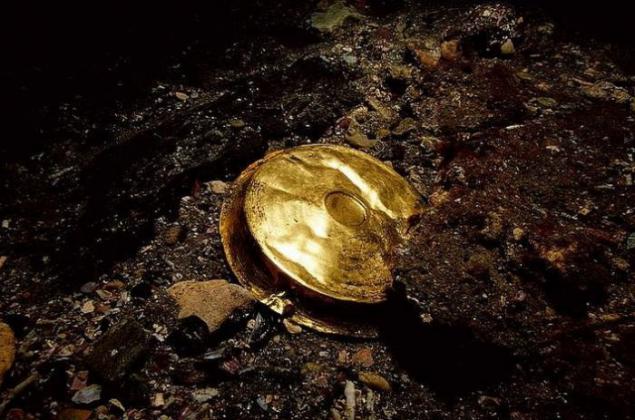
Remains of thick stone walls indicate the limits of its territory. Near the destroyed walls, archaeologists found three huge statues of pink granite, which presumably were defeated during the earthquake. Two statues depict still unknown pharaoh and his wife. The third article - Hapi, the Egyptian god of the Nile.
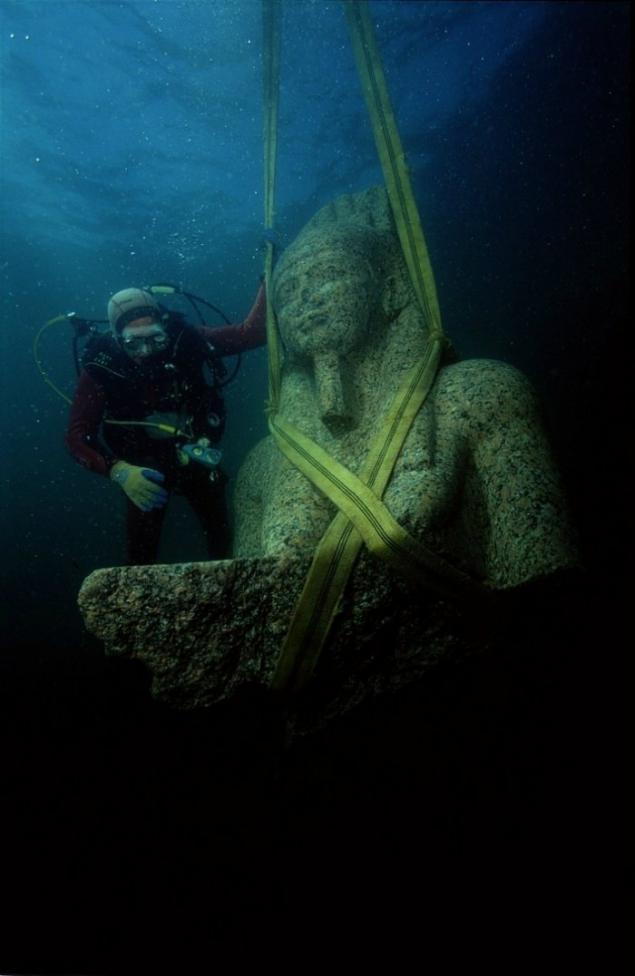
Inside the temple is a monumental tomb of pink granite covered with hieroglyphics. Its upper part is still difficult to read, but a preliminary translation of texts placed on the lower part shows that this is undoubtedly the temple Heraklion. A number of scientists, including Manfred Clauss from the University of Frankfurt, believes that the ultimate deciphering the inscriptions on the tomb will give even more.
Even more impressive is the two-meter black granite stele - almost a full copy of the stele found in 1899 in Nokratzhe. This is the first case of duplication of stelae in Egyptology. Stela of Nokratzha, which is now in the Egyptian Museum in Cairo, bears the text of the decree of Pharaoh Noktanebusa First, the founder of the 30th dynasty, who ascended the throne in November 380 BC This decree introduced a 10 percent tax on the Greek artisans and products in Nokratzhe and Tonis, who had directed the construction of the temple to the goddess Neith.
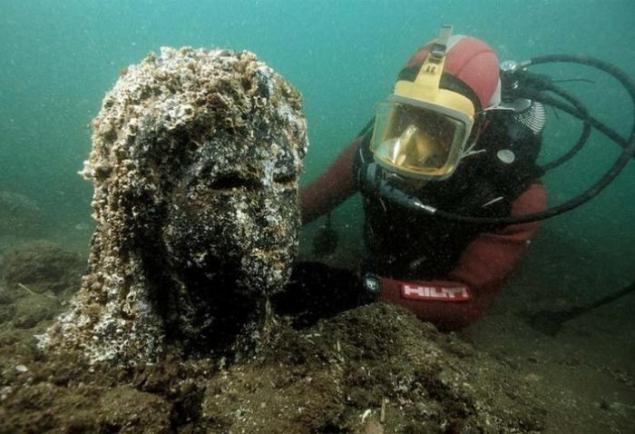
The text ends with the words: "And he said to his Majesty:" Let it be carved on the stele erected in Nokratzhe, canal Anu. " Stele found not anything different from the first, except for the last sentence, which reads: "And he said to his Majesty:" Let it be carved on the stele, installed at the entrance to the Greek sea in Heraklion-Tonis ».
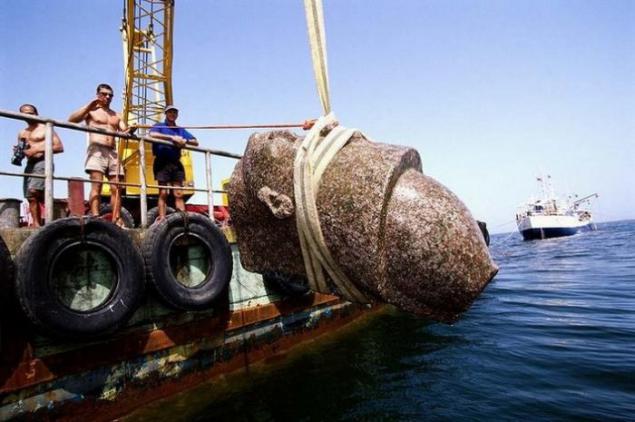
Godo group also found the place where the harbor of Heraklion, in which fragments are now at least 10 vehicles piled in a heap. This suggests that they were killed by the tidal wave that followed the earthquake.
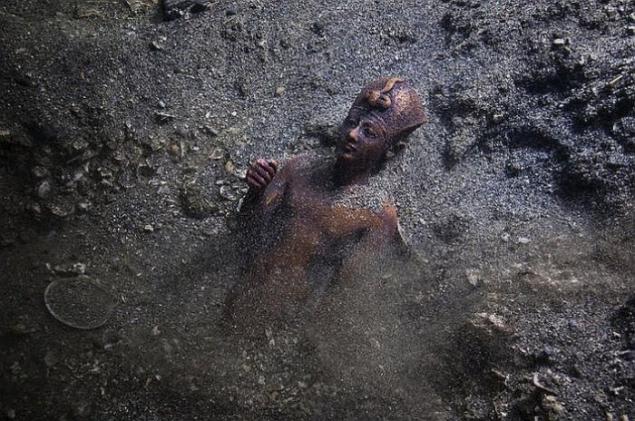
Wherever researchers examined the underwater city, they found a variety of subjects. All of them date back to the period from the first century BC previously. Most of them - in good condition, despite being under water for two thousand years.

Among the findings - gold earrings, bracelets, pins, rings, combs, beautiful Greek Cup, glazed, kuritelnitsa for aromatics, hundreds of coins. All of them only slightly scratched the surface. And this is just the beginning - the main excavation (if this concept can be applied to archaeological work under water) - ahead.
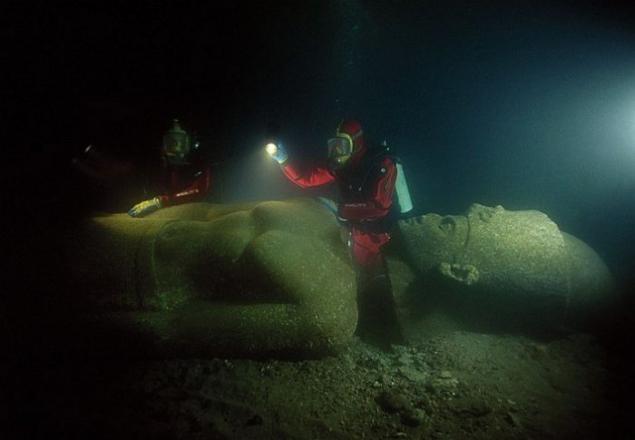
The Lost City was discovered under water after 1,200 years. The main seaport at the mouth of the Nile, Heraklion was small but thriving city. Its residents through contact with foreign merchants and sailors who frequented the town on the road to Egypt, were educated people with a broad outlook. The main temple of the city was dedicated to the god Amun.

But in the blink of an eye Heraklion disappeared. In the first century BC there was a strong earthquake that flattened homes, sinking ships in the harbor, killed most of the inhabitants of the city, forcing the others to flee, leaving all valuable property.

For two millennia, the ruins of the city, hidden from prying eyes silt and ten meters of water, lay 3 kilometers from the coast of Alexandria, in the Bay of Aboukir.

But last summer, the French archaeologist Franck Godo announced that he had discovered the remains of the city, which, in his opinion, are relevant to Heraklion: black granite slab or stele, on which is written the word "Heraklion", the remains of ten ships in the former harbor, as well as thousands of others items, including jewelry, coins, vases and personal belongings.


Although modern scholars about this city, little is known, it knew the whole ancient world. The Greek historian Diodorus wrote that Hercules, son of Zeus, was blocked by the Nile and thus saved the lives of people on the banks of the river.


In gratitude, the people erected a temple in his name and was named in his honor the city. According to another Greek historian, Herodotus, Elena the Fair and her lover Paris fled to Heraklion, fleeing from the wrath of the husband of Helen, Menelaus, but their forced return Tonis, guardian of the gates of the Nile.

Somewhat differently tells about these events Greek historian VI. Stesichorus. He says that the Greeks have been misled by the gods on the location of Helen to help with the war to reduce the population of Troy. In fact, according to Stesichorus, during the Trojan War, Elena was in Heraklion.

The inscription on the basis of the stele certifies that this plate was to be erected in the "Heracleon-Tronise (Herakleion-Thonis)». This is the first clear evidence that the observed semi-mythical city is still Heraklion.

Archaeologist Frank Godo found no evidence Helen stay here, but it seems a fantastic discovery. One of the first great temple was found Heraklion.

Remains of thick stone walls indicate the limits of its territory. Near the destroyed walls, archaeologists found three huge statues of pink granite, which presumably were defeated during the earthquake. Two statues depict still unknown pharaoh and his wife. The third article - Hapi, the Egyptian god of the Nile.

Inside the temple is a monumental tomb of pink granite covered with hieroglyphics. Its upper part is still difficult to read, but a preliminary translation of texts placed on the lower part shows that this is undoubtedly the temple Heraklion. A number of scientists, including Manfred Clauss from the University of Frankfurt, believes that the ultimate deciphering the inscriptions on the tomb will give even more.
Even more impressive is the two-meter black granite stele - almost a full copy of the stele found in 1899 in Nokratzhe. This is the first case of duplication of stelae in Egyptology. Stela of Nokratzha, which is now in the Egyptian Museum in Cairo, bears the text of the decree of Pharaoh Noktanebusa First, the founder of the 30th dynasty, who ascended the throne in November 380 BC This decree introduced a 10 percent tax on the Greek artisans and products in Nokratzhe and Tonis, who had directed the construction of the temple to the goddess Neith.

The text ends with the words: "And he said to his Majesty:" Let it be carved on the stele erected in Nokratzhe, canal Anu. " Stele found not anything different from the first, except for the last sentence, which reads: "And he said to his Majesty:" Let it be carved on the stele, installed at the entrance to the Greek sea in Heraklion-Tonis ».

Godo group also found the place where the harbor of Heraklion, in which fragments are now at least 10 vehicles piled in a heap. This suggests that they were killed by the tidal wave that followed the earthquake.

Wherever researchers examined the underwater city, they found a variety of subjects. All of them date back to the period from the first century BC previously. Most of them - in good condition, despite being under water for two thousand years.

Among the findings - gold earrings, bracelets, pins, rings, combs, beautiful Greek Cup, glazed, kuritelnitsa for aromatics, hundreds of coins. All of them only slightly scratched the surface. And this is just the beginning - the main excavation (if this concept can be applied to archaeological work under water) - ahead.

Tags
See also
Villa Epecuen - Argentine village, which is 25 years under water
Cities that may disappear underwater
City Villa Epecuen 25 years under water
Looks like a shot under water?
Heracleon - a city 1,200 years ago, who went under the water
Russian cities, found themselves under water
Important events of the year
Important events in 2013 in pictures
They can go under water
Gone under the water
















